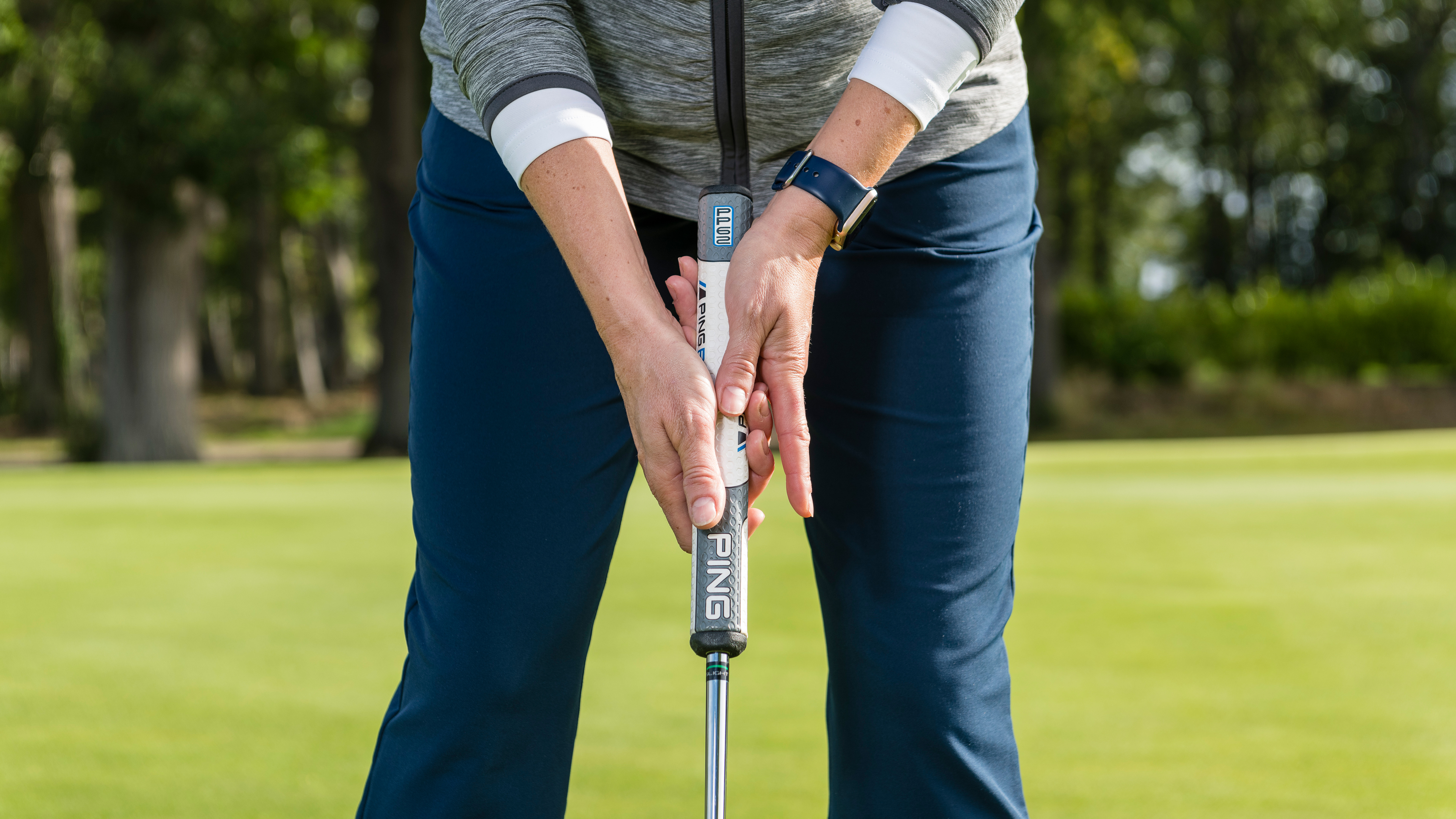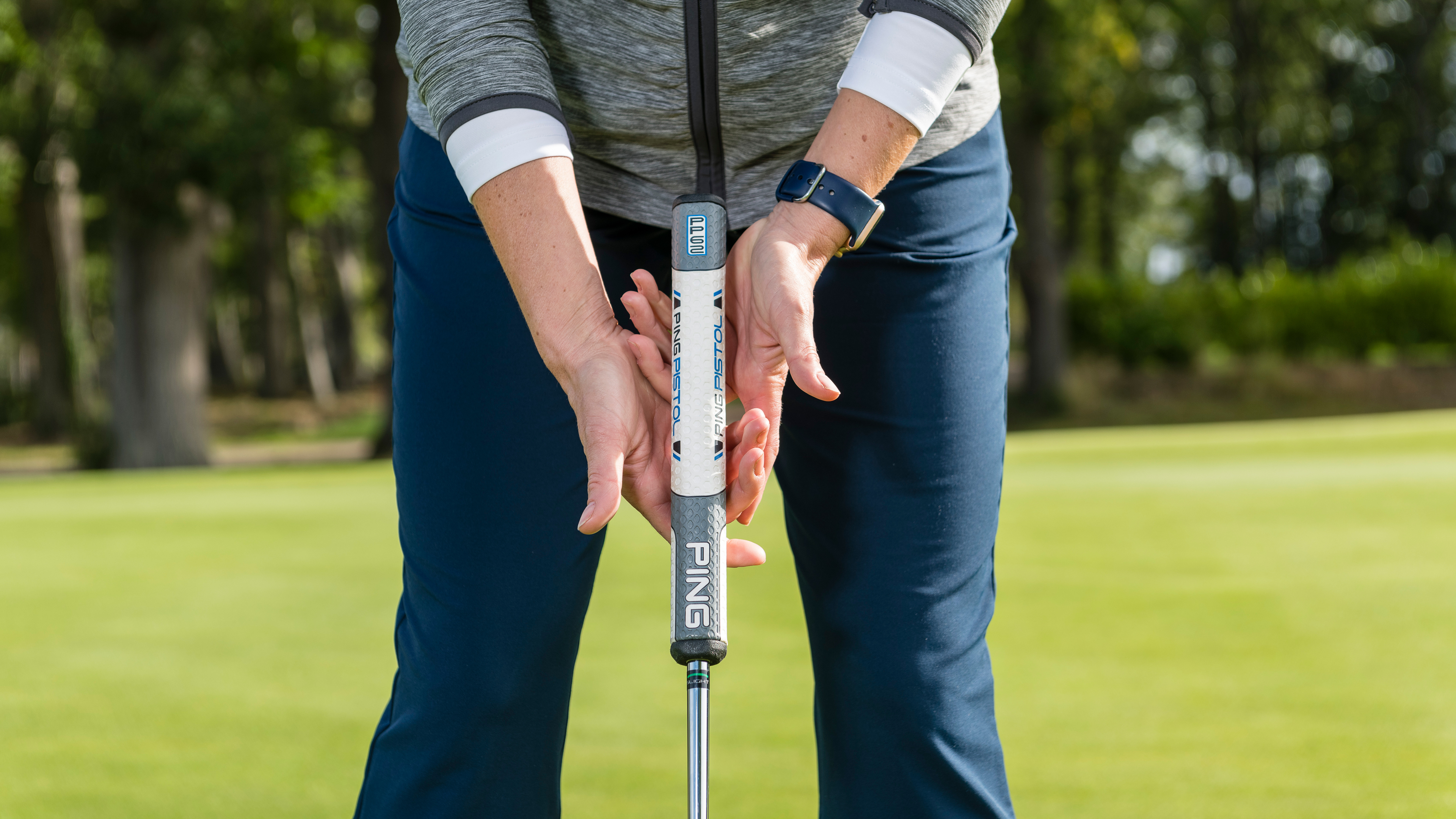
The perfect golf grip with the putter is different for different people, but finding the right one for you is important. The best golf tips for putting will say that you should experiment to find your optimal putting grip, and Golf Monthly Top 50 Coach Katie Dawkins can help you do just that.
In this video and article, Katie explains how to perfect the reverse overlap putting grip so that you can focus your attention on reading greens and making birdies...
In the full golf swing, the golf grip encourages the hands to work together by creating wrist hinge and a powerful release. When hitting drivers, irons and wedges, some golfers opt for an overlapped grip, while others go for interlocked.
While this is the way to go on the fairways and tee boxes, it's not particularly efficient on the putting greens. Instead, it would be better to adopt a grip that almost locks the hands out. The putting stroke action comes from the shoulder rather than the wrists, as this is where you get the consistency. It's also a great way to cure the putting yips.
Reverse overlap putting grip explained
The first thing that’s different is the putter runs down the palms of your hands rather than into the fingers - this serves to lock the hands out of the party. So, instead of your trail pinky finger overlapping or linking with the lead index finger, it’s a case of role reversal.

I call this my cuticle grip when explaining it, as the top index finger rests over the cuticles of the lower hand. With what is now a hands-free feeling, you can smoothly stroke the ball rather than whack it.
The next thing to say is that a decent putter should feel little to no tension at address. In time, you want this relaxed hold to become second nature so it’s easier to produce a silky smooth action on the dance floor.

If you can achieve that, especially on longer putts, you'll find the ball glides across the green, rolling out for longer with less of a hit required. For anyone who struggles with how to judge putting distance, take note.
When the putter is held too firmly and the wrists are utilised too much, the ball has a tendency to skid and then bounce before it starts rolling. This actually slows it down, leading to those shouts of, “I hit that so hard” even though it finishes way short.
It's important to remember what works for the rest of your four-ball won't necessarily work for you, whether that's the claw grip for putting or something more conventional. So, devote some time to the reverse overlap if you want to see the desired results.
Do any pros use the reverse overlap putting grip?
There are plenty of examples of top professional golfers who use the reverse overlap putting grip. Probably the most notable would be Jordan Spieth. If you catch him on TV or at an event - take a look at how level his shoulders are at address. It really is very noticeable.
Of course, putting has been one of Spieth's biggest strengths and the technical benefits of the reverse overlap putting grip have helped him pick up multiple major championships.







